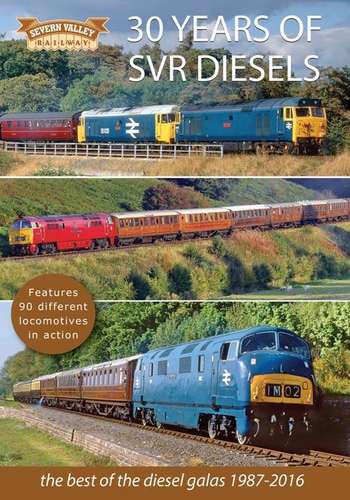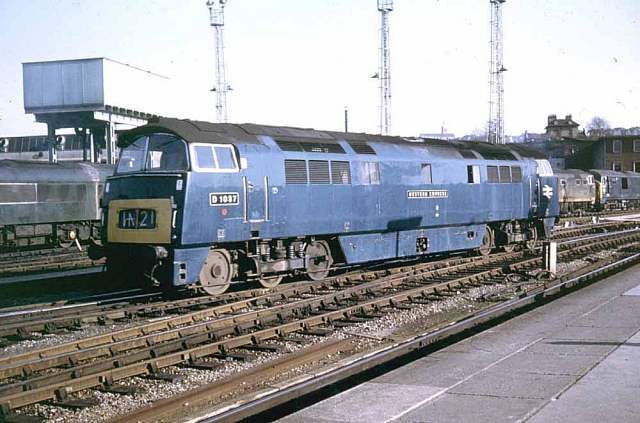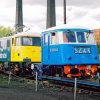I use an iPhone XR, Canon 80D and Leica M10-P; it appears to me that iOS performs colour processing on the captured image before saving. Colours are often vivid with the resultant image “better” than real life.
Interesting that you mention that, as I think I've observed the same thing. I was selling a Magimix blender recently, which was in this fetching shade of teal:
My iPhone was correcting the shade of blue to a much bluer hue, with far less green in the mix. When I downloaded the photos onto my laptop my photo editing software (Cyberlink PhotoDirector) initially opened the photos with the correction applied, and then instantly reverted them back to their initial state. As such the teal colour jumped back to life.
Depending who you speak to some say it’s more green than blue, it does seem to be an odd colour that looks different depending who you ask, lighting etc
This was why I was asking if BR Blue was a colour mixed at various depots, using a standard recipe. This is how Spitfires were painted during WW2, and the odd colour 'sky', painted on the underside, was quite different depending on whether it was a Castle Bromwich Spitfire (etc). The colour 'sky' upsets the scale model guys immensely, as it doesn't have any blue in it, and various paint companies produce different hues. There is a later British Standard colour 'sky blue' (BS 381c 101) that is entirely different, and is the colour that the engines in military vehicles were repainted in once they had been overhauled back in the '60s. Go into the archives at the RAF museum at Hendon (I think?) and there are original paint swatches that some consider to be definitive, but who knows how well these have aged and decomposed over time.
On a slightly similar note I've also heard about modelers going to the de Havilland museum to capture the proper shade of yellow of the prototype Mosquito. From memory somebody was very smug about getting the colour right, but elsewhere on the aircraft the yellow paint had worn away to reveal a different shade of yellow. The correct yellow was the lower layer, that had been over-painted with some sort of car paint during an earlier restoration. It isn't easy getting these colours right!
I also don't think it is unreasonable to say that it is mostly men who are interested in this stuff, and colour blindness of various forms is more prevalent in men. I use this website sometimes to check that any graphics I produce for work still make sense for colour blind people.
https://www.color-blindness.com/coblis-color-blindness-simulator/
I uploaded a recent photo of the Deltic 'Alycidon', resplendent in BR Blue, and toggled through the options. If you simulate 'Green-Weak/Deuteranomaly' then you wind up with a colour close to the deeper BR Blue that some modelers use! Coincidence? A good number of us edit our photos digitally (in my case usually to try and squeeze something acceptable out of marginal quality raw ingredients), so it is no wonder that BR Blue is such a slippery fish really.
Interesting.
I know that the lighting conditions can distort the colours of something. The yellow panel on the Western further up the thread does seem to be yellow to us, but as the poster said, it isn't actually. I think maybe "Chromatic Blue" could be defined as BR Blue when in certain lighting conditions, e.g.
"This engine was painted in BR Blue in the workshop at Swindon but now when we see it in Paddington it's in a very nice shade of Chromatic Blue thanks to the lighting here"
This is what I'm thinking at this stage. I think the finish gets a helping hand from being applied to bare metal, rather than slopped on top of another finish (like the Hymeks mentioned in this thread), patched in and reapplied over a rougher surface. Ask anybody who resprays or details cars and they will tell you that if you want an optimal finish then the car needs to be taken back to bare metal, primed and sprayed after that. Of course you can simply key up the factory finish, fill up the rusty areas with body filler, level everything with 120 grit paper and then crank out the Halfords aerosols! As a finish it will work to keep the corrosion at bay and give an approximately consistent colour that looks passable from ten feet away. Likewise you can spend more time properly flattening out the finish on your car and achieve a level finish that is superior to what left the factory (some Ford Mustang restorers aim to copy the inferior 'orange peel' look of the rushed, original '60s finishes on these cars).
I think that Chromatic Blue is therefore BR Blue 'on a good day', painted on properly prepped surfaces with a high level of care an attention. I sincerely doubt they were finishing locos using metallic paint or anything else like that.











 . On the one hand heritage locos can be babied more I presume, but they are also limited to what these guys really have the time and resources to do. A lot of heritage lines seem to have diesels under overhaul for long periods of time, so I wonder if the cosmetics come in second place? Judging by my photo of Bo'Ness' 27001, there is a lot of filler trussing up the rougher sections around the cab. I wonder if the guys at Bo'Ness can do anything but brush-paint locos. You would need a pretty hefty respirator setup, and ability to isolate the loco, if you were to properly strip it back to bare metal. You probably can't just let the apprentice have a bash with a random orbital sander! I'm not sure which heritage railways have such facilities, or whether somewhere like Crewe heritage centre is setup for this sort of work? I assume it comes down to money (and me not really knowing how engines are painted and assuming they are painted like cars).
. On the one hand heritage locos can be babied more I presume, but they are also limited to what these guys really have the time and resources to do. A lot of heritage lines seem to have diesels under overhaul for long periods of time, so I wonder if the cosmetics come in second place? Judging by my photo of Bo'Ness' 27001, there is a lot of filler trussing up the rougher sections around the cab. I wonder if the guys at Bo'Ness can do anything but brush-paint locos. You would need a pretty hefty respirator setup, and ability to isolate the loco, if you were to properly strip it back to bare metal. You probably can't just let the apprentice have a bash with a random orbital sander! I'm not sure which heritage railways have such facilities, or whether somewhere like Crewe heritage centre is setup for this sort of work? I assume it comes down to money (and me not really knowing how engines are painted and assuming they are painted like cars).


